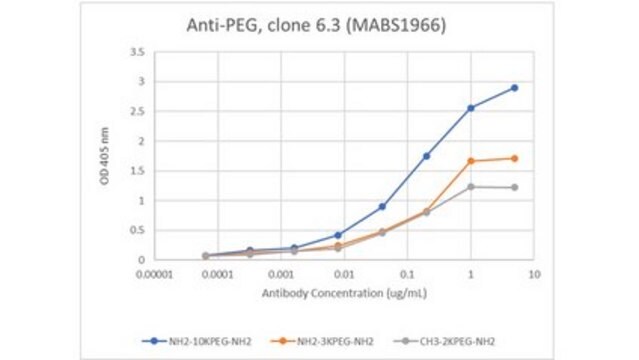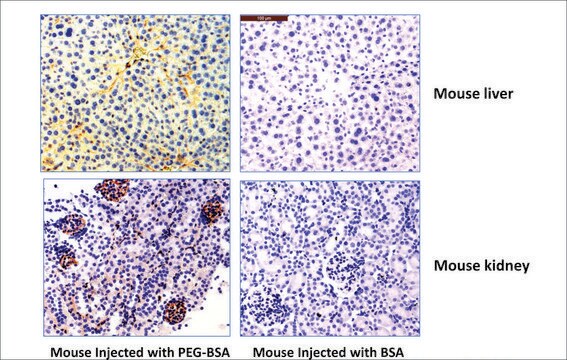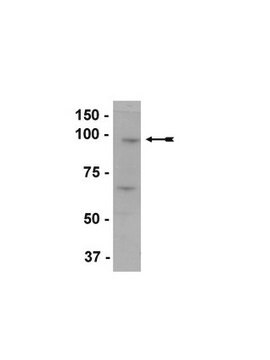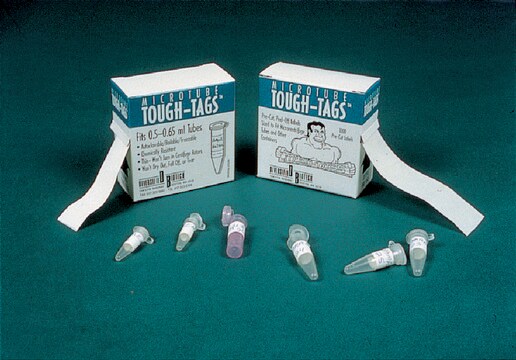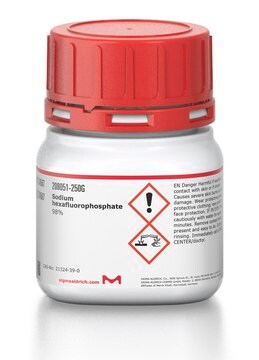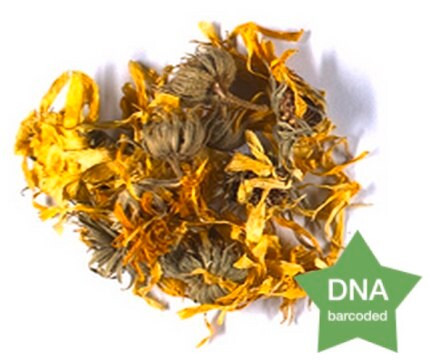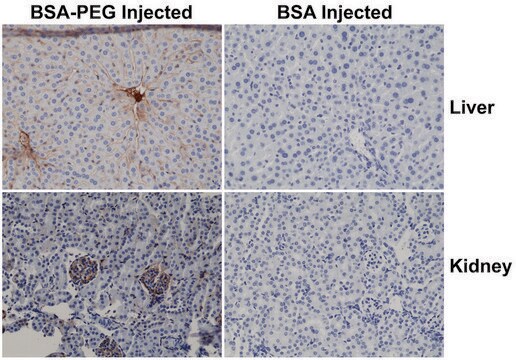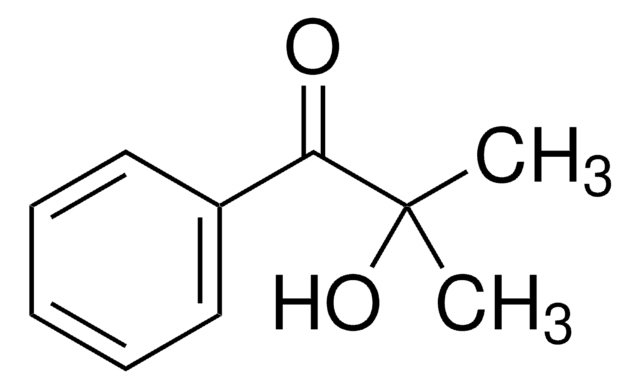MABS1214
Anti-PEG (methoxy group) Antibody, clone RM105
clone RM105, from rabbit, purified by affinity chromatography
Sinonimo/i:
PEG, pegylation, methoxy group, Polyethylene glycol, polyethylene oxide, PEO, polyoxyethylene, POE
About This Item
Prodotti consigliati
Origine biologica
rabbit
Livello qualitativo
Forma dell’anticorpo
purified immunoglobulin
Tipo di anticorpo
primary antibodies
Clone
RM105, monoclonal
Purificato mediante
affinity chromatography
Reattività contro le specie (prevista in base all’omologia)
all
tecniche
ELISA: suitable
immunohistochemistry: suitable
western blot: suitable
Isotipo
IgG
Condizioni di spedizione
wet ice
modifica post-traduzionali bersaglio
unmodified
Descrizione generale
Immunogeno
Applicazioni
ELISA Analysis: Multiple concentrations of this antibody was used to detect three different BSA-PEG conjugates (5K, 40K and 40K branched)
Signaling
Epitope Tags
Qualità
Western Blotting Analysis: A 1:1;000 dilution of this antibody detected PEG (methoxy group) on conjugated recombinant BSA
Descrizione del bersaglio
Stato fisico
Stoccaggio e stabilità
Altre note
Esclusione di responsabilità
Non trovi il prodotto giusto?
Prova il nostro Motore di ricerca dei prodotti.
Codice della classe di stoccaggio
12 - Non Combustible Liquids
Classe di pericolosità dell'acqua (WGK)
WGK 2
Punto d’infiammabilità (°F)
Not applicable
Punto d’infiammabilità (°C)
Not applicable
Certificati d'analisi (COA)
Cerca il Certificati d'analisi (COA) digitando il numero di lotto/batch corrispondente. I numeri di lotto o di batch sono stampati sull'etichetta dei prodotti dopo la parola ‘Lotto’ o ‘Batch’.
Possiedi già questo prodotto?
I documenti relativi ai prodotti acquistati recentemente sono disponibili nell’Archivio dei documenti.
Il team dei nostri ricercatori vanta grande esperienza in tutte le aree della ricerca quali Life Science, scienza dei materiali, sintesi chimica, cromatografia, discipline analitiche, ecc..
Contatta l'Assistenza Tecnica.